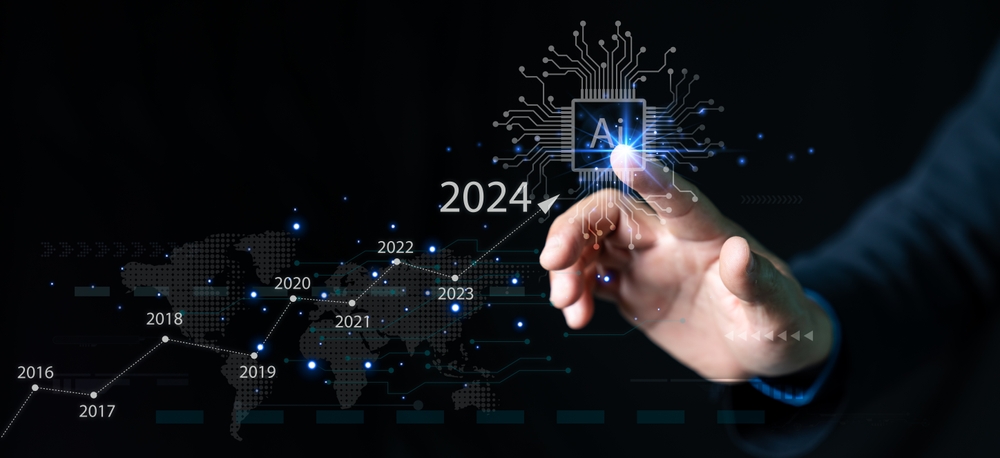- Home
- Whitepapers, reports & articles
- Insights from the Inside: What Banking Leaders Really Think About AI
Insights from the Inside: What Banking Leaders Really Think About AI

Contents
21 May 2025
Earlier this year, Sandstone Technology hosted its annual Customer Forums in Australia and the UK, bringing together senior banking leaders for in-depth conversations about the future of financial services. As part of these forums, Sandstone Technology’s CCO, Jennifer Harris had the opportunity to moderate closed-door roundtables focused on artificial intelligence (AI), machine learning (ML) and robotics in banking.
The conversations across both regions were remarkably consistent in one regard: AI is no longer a concept under consideration. It is being deployed today tactically, strategically, and in some cases, at scale. What emerged from these sessions was a clear picture of where the industry stands, what challenges remain and how FIs are preparing for a transformed future.
In this piece, Jennifer shares key takeaways from the roundtable discussions — straight from the room — along with her own reflections on what’s really happening inside the financial industry.
AI in Action: Where Are Banks Right Now?
Many institutions are already integrating AI, ML and robotics across internal operations and customer-facing experiences. The current wave of adoption is characterised by very specific, targeted use cases of AI — tools that deliver measurable outcomes without requiring full-scale transformation from day one. These technologies are enhancing operational efficiency, personalising customer experiences and improving risk management. Approximately 61% of banks are leveraging AI to enhance customer experiences, with projections indicating the global AI in banking market will reach $26 billion by 2026. AI implementations have led to cost reductions of up to 22% and increased revenue by an average of 9%.
Banks are deploying AI co-pilots to assist staff in real-time decision-making, utilising automated code generation tools, and implementing chatbots to enhance customer service. These technologies are also being used for personalised marketing communications, credit assessments, and treasury insights.
A notable example is the Commonwealth Bank of Australia, which has expanded its AI capabilities to handle approximately 50,000 daily inquiries, providing context-aware responses and improving productivity by automating routine tasks .
Customer Experience: The First Major Win
AI technologies are delivering immediate benefits in banking by accelerating workflows, and refocusing human capital on high-value tasks. Automated workflows, proactive communications, and predictive modelling are not only streamlining operations but also hyper-personalising customer experiences.
For instance, AI-driven chatbots now handle over 70% of customer queries in banking, leading to a 30% reduction in customer service costs. Additionally, 68% of customers report higher satisfaction with banks that offer AI-based personalised services.
The model that’s emerging is hybrid: AI does the heavy lifting, humans handle the high-value moments. It’s smart, efficient, and deeply customer centric.
And there is a bottom-line impact too — reduced cost-to-serve, improved service delivery and clear ROI on well-targeted implementations.
So What’s Slowing Things Down?
Despite all this momentum, AI isn’t plug-and-play and the banking leaders weren’t shy about calling out the blockers.
Data Privacy and Security:
Top of the list: trust and control. What data is being captured? Where is it going? Who has access? Banks are rightly cautious when it comes to open-source models and third-party tools.
Workforce Training:
Then there’s the people side, getting teams across the organisation comfortable with the tools, the outcomes and the governance that wraps around them. It turns out, prompt engineering and feedback loops aren’t just buzzwords — they’re now core competencies.
Ethical Imperatives:
And let’s not ignore the elephant in the room: ethics. How do we ensure fairness, transparency and responsible use of AI in areas like lending and servicing? Banking leaders agree: it’s a shared challenge and one the industry needs to solve together and fast.
Regulatory Compliance
It was fascinating to observe the nuanced differences between Australia and the UK. In the UK, AI adoption is being actively encouraged by the government, while regulators maintain a cautious stance, balancing innovation with consumer protection under frameworks like the Consumer Duty.
In Australia, the landscape is fragmented. The major banks and some Tier 2s are lobbying collectively, but adoption speeds vary widely and a unified industry approach remains elusive. Regardless of region, there was consensus that regulatory frameworks need to catch up and that clarity will be critical for future AI deployment at scale.
There were moments of healthy scepticism too. Concerns about job displacement were real, and so were the fears of “black box” systems making opaque decisions. But forward-thinking banks are tackling this head-on through transparency, upskilling and open dialogue with staff.
Strategic Outlook: Where AI Is Heading Next
The future of AI in banking is not incremental — it’s exponential. Leaders around the table envisioned a world where virtual assistants are more contextual, hyper-personalisation is the norm, and predictive models allow for instant, frictionless service. Looking ahead, AI is poised to play an increasingly critical role in banking:
Fraud Detection and Cybersecurity: AI will help evolve fraud detection significantly using behavioural analysis to flag anomalies in real- time. Some institutions are already using AI-generated audit trails to satisfy compliance reporting, and the results are promising. AI-powered fraud detection systems are capable of analysing over 10,000 transactions per second, significantly reducing false positives and enhancing security.
Virtual Assistants: AI is expected to play a pivotal role in transforming customer service models. Real-time responsiveness, highly contextual engagement, and end-to-end automation will become core to competitive advantage. The development of more contextual and human-like virtual assistants will revolutionise customer interactions, providing personalised and efficient service.
Operational Efficiency: AI is expected to automate 30% of back-office operations, leading to significant cost savings and increased productivity. Back-office operations will see more straight-through processing as confidence in decision accuracy improves.
Workforce Evolution: Perhaps most importantly, as AI capability grows, so too will its impact on workforce design. We are already seeing a shift where AI augments roles—eliminating repetitive tasks and freeing teams to focus on higher-value activities. This will require new thinking around talent, leadership, and operating models.
Furthermore, the global AI in banking market is projected to reach $26 billion by 2026, reflecting the growing investment and reliance on these technologies.
Closing Thoughts: The Future Is Already Being Written
The most valuable insight from our forums was that AI is no longer a question of if, but how well. It is not a technology problem, it is a business strategy, defined by risk appetite, customer promise, and execution discipline.
Financial institutions that approach these technologies with both ambition and caution, supported by the right governance and experimentation frameworks, are already seeing returns. It is critical to understand not just the technology, but the strategic levers it enables. AI can drive performance, reduce friction, and elevate experience—but only when deployed with clear intent.
For institutions ready to take the next step, the advice is simple: explore targeted use cases of AI, demand transparency from your technology partners, test, learn, and refine. The opportunity is real but so is the responsibility.
I left both roundtables energised by what I’d heard but also deeply aware of the responsibility we carry as technology partners. At Sandstone, we believe experimentation is critical, but so is accountability. The message to banks was clear: Ask your tech providers to show you. Play, learn, question, and most importantly — align your AI strategy with your customer promise.
We are entering a new era of banking, shaped by intelligence, speed, and personalisation. Those who embrace it thoughtfully will lead the industry forward.
The inside view is: AI is here, it’s powerful, and it’s personal. The next chapter in banking has already begun and it’s being co-written by humans and machines.
Read more
- All
- Article
- Whitepaper
- Reports
























.jpg)











.jpg)

.jpg)


.jpg)
.jpg)


